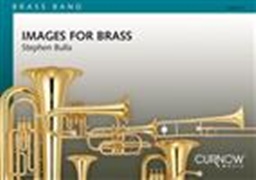Results
-
 £87.95
£87.95Harmony Music (Brass Band - Score and Parts) - Sparke, Philip
2013 National Championships Area Qualifying Contest - Championship Section.Duration 14:30Recorded on Polyphonic QPRL089D Harmony Music
Estimated dispatch 7-14 working days
-
 £44.95
£44.95Harmony Music (Brass Band - Score only) - Sparke, Philip
2013 National Championships Area Qualifying Contest - Championship SectionDuration 14:30Recorded on Polyphonic QPRL089D Harmony Music
Estimated dispatch 7-14 working days
-
 £69.95
£69.95HENRY V (Overture) (Brass Band - Score and Parts) - Vaughan Williams, Ralph
Henry the Fifth. Butlins 2018 3rd Section Set Work. 2011 National Championships Finals Test Piece - 4th Section.
Estimated dispatch 7-14 working days
-
 £32.95
£32.95HENRY V (Overture) (Brass Band - Score only) - Vaughan Williams, Ralph
Henry the Fifth. Butline 2018 3rd Section Set Work. 2011 National Championships Finals Test Piece - 4th Section.
Estimated dispatch 7-14 working days
-
 £31.60
£31.60HOLLYWOOD! (Brass Band - Score only)
2013 National Championships Area Qualifying Contest - 3rd Section
Estimated dispatch 7-14 working days
-
 £78.40
£78.40HOLLYWOOD! (Brass Band Set)
2013 National Championships Area Qualifying Contest - 3rd Section
Estimated dispatch 7-14 working days
-
 £22.99
£22.99IMAGES FOR BRASS (Brass Band Extra Score) - Bulla, Stephen
2nd Section Test Piece 2016 National Finals of the British Brass Band Championship.
Estimated dispatch 7-14 working days
-
 £54.99
£54.99IMAGES FOR BRASS (Brass Band Set - Score and Parts) - Bulla, Stephen
2nd Section Test Piece 2016 National Finals of the British Brass Band Championship.
Estimated dispatch 7-14 working days
-
 £59.95
£59.95ISAIAH 40 (Brass Band Set - Score and Parts) - Redhead, Robert
2007 National Championships Area Qualifying Contest - Championship Section.
Estimated dispatch 7-14 working days
-
 £95.00
£95.00Journey of the Lone Wolf (Brass Band - Score and Parts) - Dobson, Simon
Championship Section Test Piece for the 2016 National Finals of the British Brass Band Championship.The Lone Wolf of the title is the great Hungarian composer and folklorist Bla Bartok. Bartok's journey took him from the hills of the Balkans to the heart of the new world. His singular vision may have meant a life out in the cold, a life without warmth and love, a life without true happiness, a death mourned by a few in a strange land.The first of the three linked movements is capturing the Peasants' Song and follows the young Bartok and fellow composer Zoltan Kolday as they embark on Summertime adventures through the Hungarian countryside to collect and catalogue the astonishing variety of Gypsy and folk music heard in the Balkan hills. The arrival of WW1 plunges Bartok's beloved Hungary into chaos.Bartok was at times a cold man, aloof and lonely. The occasional moments of tenderness he showed are portrayed in Night Music. His brief but intense affairs speak of a love he could only long for. Jazz is my night music and here there are hints of what Bartok may have heard in the USA later in his life.Having been forced by the world's evils to leave his homeland of Hungary for America Bartok, the anti-fascist, felt isolated and angry. In the finale, Flight and Fight, we hear his longing for a simpler time of Gypsy folk dances as well as his maturity and depth as a composer finally exploring deeper colours and darker themes.Duration: 15.00
Estimated dispatch 7-14 working days
